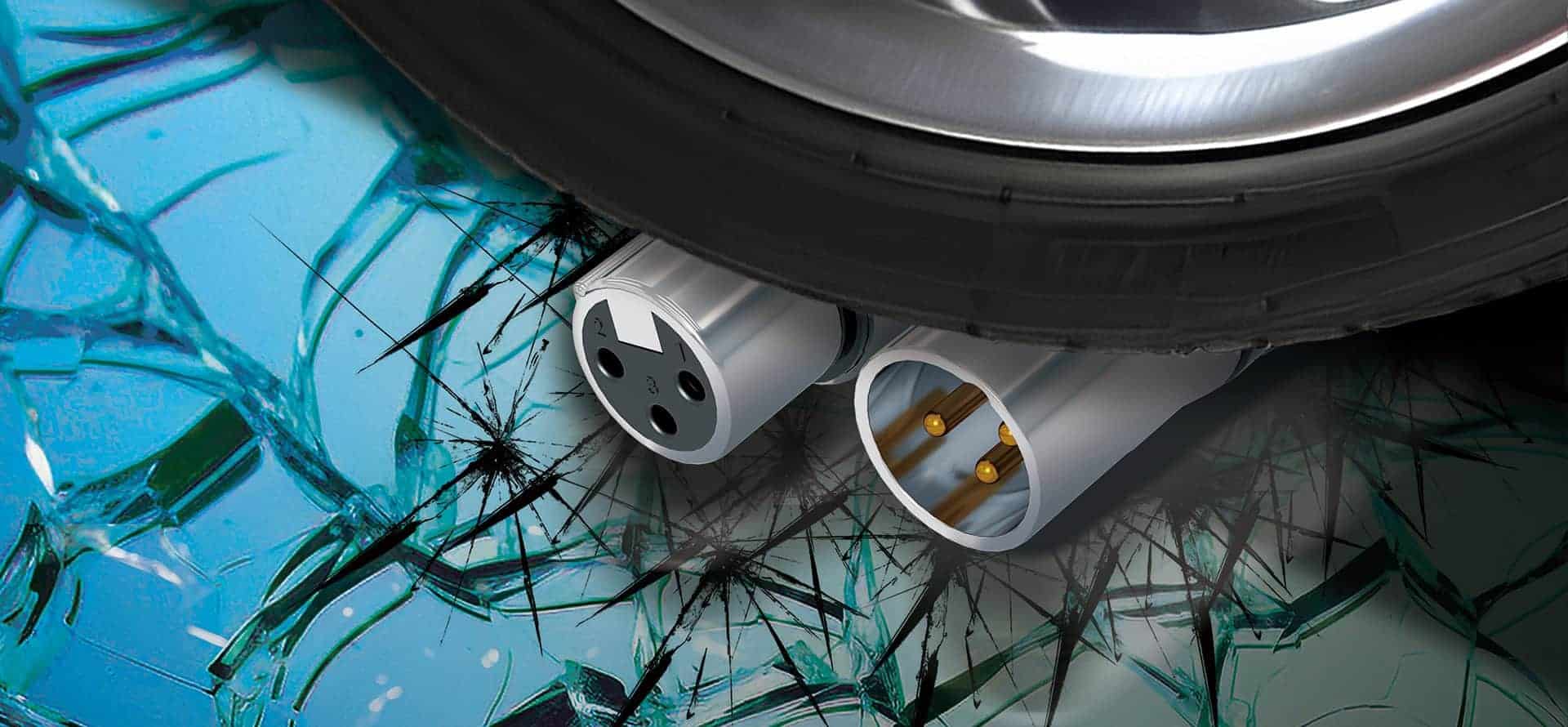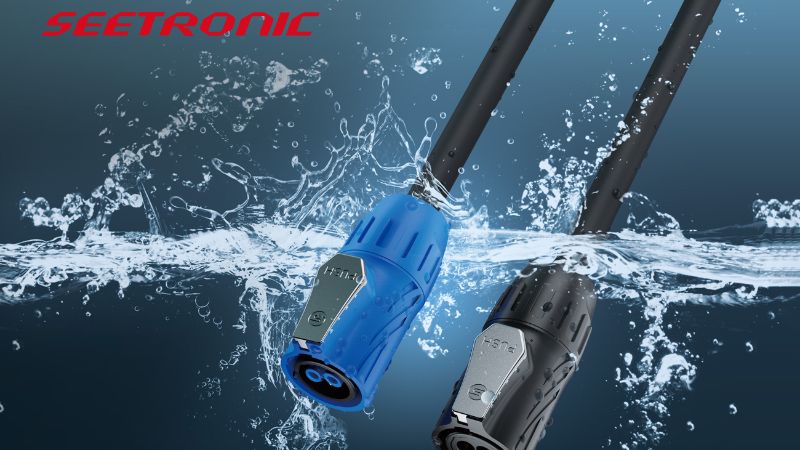DMX and XLR cables look identical but are built for different jobs. This guide gets straight to the point, explaining the crucial differences so you can confidently choose the correct cable and avoid technical nightmares.
How to Tell the Difference: A Quick Visual Guide
So, how do you quickly tell them apart when you’re in a hurry?
- Read the Jacket: This is the most reliable method. Most DMX cables will be clearly labeled with “DMX” or “110 Ohm” printed directly on the outer casing.
- Check the Connectors: Some manufacturers will also label the metal connectors themselves, but this is less common.
- When in Doubt, Keep Them Separate: The best practice is to have separate, clearly labeled storage for your audio and lighting cables. If a cable is unmarked, assume it’s XLR and reserve it for audio only. Don’t risk your light show on a mystery cable.
What is DMX? The Standard for Lighting Control
DMX (Digital Multiplex) is a communication protocol, and the standard is DMX512. Think of it as the language that a lighting controller uses to speak to fixtures like PAR cans, moving heads, fog machines, and other stage effects. When you program a light to change color, strobe, or move, that command is sent as a digital data packet.
Purpose of DMX Cables:
A DMX cable is the conduit for this digital conversation. Its single most important characteristic is its impedance, which is rated at 110 ohms. This specific impedance is crucial for maintaining the integrity of the digital signal over long distances. It prevents data errors that can manifest as flickering lights, random strobing, or fixtures that simply don’t respond to your commands.
3-pin vs. 5-pin DMX:
You’ll see both 3-pin and 5-pin DMX cables. While the official DMX512 standard specifies a 5-pin connector, the vast majority of fixtures today only use three of those pins. As a result, 3-pin DMX is extremely common in the market.
What is an XLR Cable? The Backbone of Professional Audio
XLR cables are the undisputed champion of the professional audio world. They are what you use to plug a microphone into a mixing board or send a signal from that mixer to a powered speaker. In stark contrast to DMX, XLR cables have a much lower impedance, typically falling between 45 and 75 ohms.
Signal Type:
XLR cables are designed to transmit an analog audio signal, not digital data. Their construction is optimized to protect this sensitive audio signal from interference.
Common Configurations:
While 3-pin XLR is the most common configuration for microphones and standard line-level connections, other versions exist for specialized audio applications.
DMX vs. XLR: The Head-to-Head Comparison
Let’s put them side-by-side. While they might look the same on the outside, their internal specifications tell a very different story.
| Feature | DMX Cable | XLR Cable |
| Primary Use | Digital Lighting Control | Analog Audio |
| Impedance | 110 ohms | 45-75 ohms |
| Signal Type | Digital | Analog |
| Data Transmitted | Lighting control information | Sound waves |
| Construction | Built for data integrity | Built for sound quality & noise rejection |
| Cost | Generally more expensive | Generally less expensive |
For a Reliable Audio Connection, Choose a Professional XLR Connector
Can You Use Them Interchangeably?
This is where the debate really heats up, but the science is clear. The short answer is: it is not recommended. Here’s why.
Using an XLR Cable for DMX (Why it’s a bad idea):
This is the most common mistake, and it can cause major headaches. When you send a high-frequency digital DMX signal through a low-impedance XLR cable, the impedance mismatch causes the signal to “reflect” back down the line.
This reflection corrupts the data stream. In the real world, this looks like:
- Flickering or strobing lights that don’t match your programming.
- Unresponsive fixtures that seem to have a mind of their own.
- Delayed responses or erratic behavior across your entire lighting rig.
While using an XLR cable for DMX is highly unlikely to permanently damage your equipment, it will absolutely make your lighting show unreliable. For a short run with just one or two lights, you might get away with it. But for any professional setup, it’s a gamble you don’t want to take.
Using a DMX Cable for XLR (Why it’s not ideal):
- Potential for Noise: Using a 110-ohm DMX cable for a microphone will often work, but it’s not ideal. DMX cables are not always built with the same level of shielding as high-quality audio cables, making them more susceptible to picking up hum, buzz, and radio interference (RFI).
- Cost Inefficiency: Given that DMX cables are more expensive, there’s no practical or financial reason to use them for an audio application.
How to Choose the Right Cable: A Simple Rule
It doesn’t get any simpler than this: Use DMX cables for lights, and XLR cables for audio.
Investing in the correct cables for the job isn’t an expense; it’s insurance. It ensures your equipment performs exactly as it was designed to, giving you a reliable, professional result every single time. To easily tell them apart, always check the printing on the cable jacket itself. A DMX cable will be explicitly labeled with “DMX” or “110-Ohm.”
Frequently Asked Questions (FAQ)
1. Can I use a regular XLR microphone cable for my DMX lights for a short run?
While a standard XLR cable might seem to work over a very short distance (like a few feet), it’s not recommended . The impedance mismatch can still cause data errors, leading to random flickering or unresponsive lights . For reliability, even on short runs, a proper 110-ohm DMX cable is always the best choice.
2. What is a DMX terminator and do I actually need one?
A DMX terminator is a small plug with a 120-ohm resistor inside. It’s placed on the “DMX Out” of the last light in your chain. Its job is to absorb the digital signal, preventing it from reflecting back down the cable, which can cause errors. You should always use a terminator, as it’s a simple, inexpensive way to ensure your lighting rig is as reliable as possible .
3. Why do some DMX fixtures use 3-pin connectors if the standard is 5-pin?
The original DMX512 standard specified a 5-pin connector to allow for a second data link that was never widely implemented . As a result, many manufacturers of DJ and consumer-level lighting use 3-pin connectors to save cost and space, since only three pins are needed for the primary DMX signal. Professionally, 5-pin is still the standard, but both work identically for controlling lights.
4. Will using an XLR cable for DMX permanently damage my lighting equipment?
It is highly unlikely that using an XLR cable will damage your lighting fixtures . The issue is not one of dangerous voltage but of signal integrity. The impedance mismatch degrades the data signal, leading to poor performance, but it will not harm the internal electronics of your lights.
5. How can I tell the difference between DMX and XLR if they look the same?
You can’t rely on the connector. Look at the text printed on the cable’s outer jacket. A proper DMX cable will be marked as “110-Ohm” or “DMX.” If it’s not marked, assume it’s an XLR/microphone cable.
6. Why are DMX cables more expensive than xlr cables?
Their cost reflects the stricter manufacturing tolerances required to consistently achieve the 110-ohm impedance needed for reliable data transmission.


